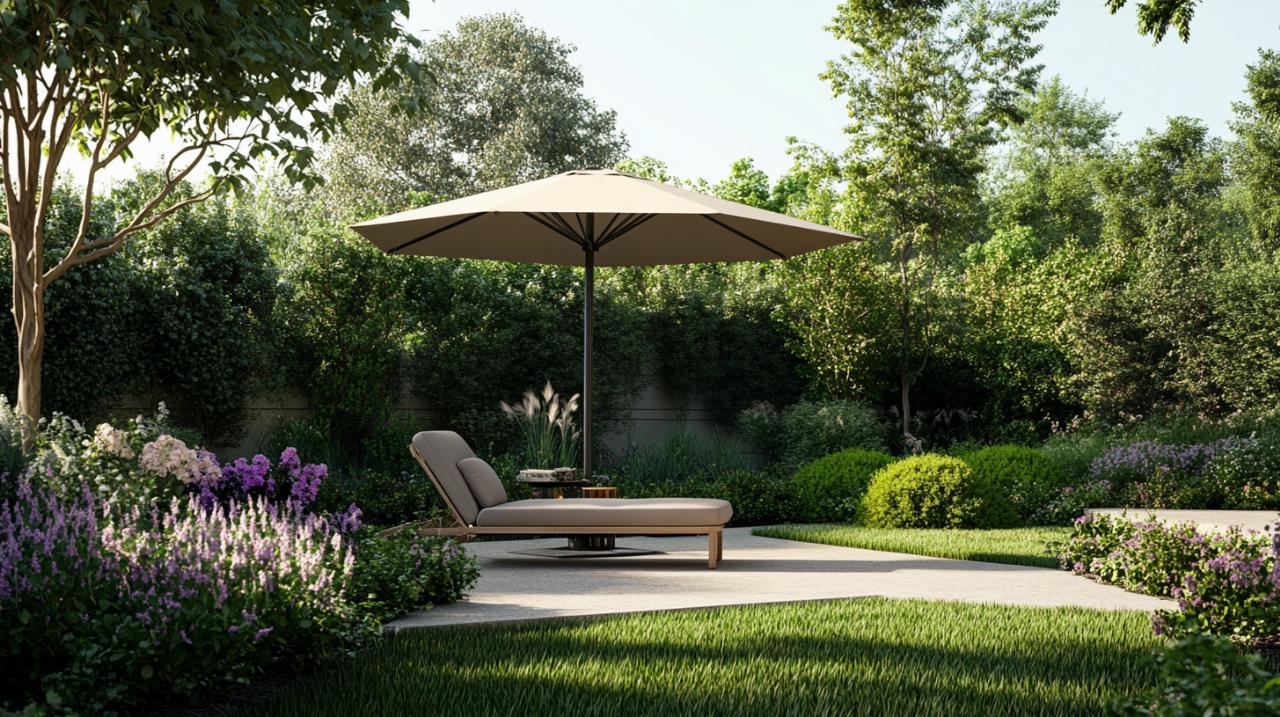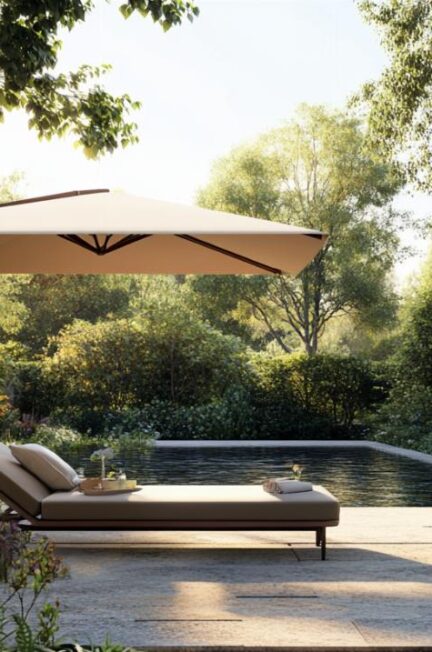Your outdoor space can greatly benefit from the right garden parasol. Not just a tool for shade, these versatile structures can transform your garden into a comfortable and stylish haven. To find the best fit for your needs, familiarize yourself with the top features that make a good garden parasol.
Material and construction
For high-quality garden parasols with top-notch materials and craftsmanship, visit belveo.
Frame materials
The durability of your parasol largely depends on the material used for its frame. Aluminum frames are popular due to their lightweight nature and resistance to rust. On the other hand, wooden frames offer an elegant and natural look but may require more maintenance to prevent damage from exposure to the elements.
Composite materials merge the best of both worlds by providing strength and resilience against harsh weather conditions. Ultimately, choosing the right frame material will depend on your priorities in terms of aesthetics and longevity.
Canopy fabrics
Another crucial aspect to consider is the fabric used for the canopy. High-quality parasols often feature canopies made from solution-dyed acrylic or polyester, which provide excellent UV resistance. These materials prevent color fading and ensure long-lasting protection from the sun.
Certain models utilize fabrics treated with water-repellent coatings, enhancing their capability to withstand rain showers. Opting for durable and well-made fabrics ensures your parasol remains attractive and functional throughout various seasons.
Size and shape variety
Choosing the right size
Garden parasols come in various sizes to accommodate different patio arrangements. For smaller spaces, compact designs measuring around 6 to 7 feet in diameter might be suitable. Larger areas demand bigger parasols, ranging from 9 to 11 feet wide.
Measure your space accurately to avoid overwhelming a small area or under-covering a large one. The appropriate size enhances aesthetic appeal while providing adequate coverage.
Different shapes
While circular parasols are common, there are also rectangular and square options available. Rectangular parasols work well for longer dining tables or lounge sets, giving consistent coverage. Square parasols strike a balance between traditional round shapes and contemporary rectangular ones, suitable for a variety of setups.
Choose a shape that complements your outdoor furniture arrangement, balancing function with style. Various shapes cater to specific needs, making your outdoor space more inviting.
Ease of use
Opening mechanisms
A key feature to examine is how easily the parasol opens and closes. Crank systems offer smooth operation, allowing you to adjust the canopy height effortlessly. Other models use pulley and rope mechanisms, offering simplicity but potentially requiring more physical effort.
Auto-tilt functions add another layer of convenience, enabling users to angle the canopy without manual hassle. Ease of use ensures you spend more time relaxing and less time battling with a stubborn parasol.
Mobility features
Some parasols incorporate wheels at their bases, facilitating easy relocation across your patio or garden. This mobility allows you to adapt to shifting sunlight or rearrange your setup for events without much effort.
Collapsible designs also enhance practicality, as they can be quickly stored during off-seasons or extreme weather conditions. Prioritizing ease of use guarantees a smoother experience, maximizing enjoyment.
Air ventilation and stability
Vented canopies
 One standout feature found in premium parasols is air ventilation through vented canopies. These vents enable airflow, reducing the risk of wind damage and providing cooler shaded areas. The structure's stability improves significantly with proper air circulation.
One standout feature found in premium parasols is air ventilation through vented canopies. These vents enable airflow, reducing the risk of wind damage and providing cooler shaded areas. The structure's stability improves significantly with proper air circulation.
Look for multi-vent systems that not only boost performance but also enhance aesthetic charm. Effective air ventilation keeps your parasol grounded, even in gusty conditions.
Stable bases
The base of your parasol plays a vital role in its overall stability. Heavier bases constructed from materials like concrete, granite, or steel provide robust support. Some designs offer fillable options for sand or water, allowing easy adjustment based on weight requirements.
Ensure the base is compatible with both your parasol’s pole size and outdoor surface. A sturdy foundation contributes to the longevity and safety of your garden setup, preventing accidental tipping.
Additional functionalities
Lighting options
Modern parasols sometimes integrate lighting features for enhanced nighttime usability. LED lights built into the ribs or canopies not only create ambiance but also extend entertaining hours after sunset. Solar-powered options eliminate the need for external power sources, contributing to eco-friendliness.
Consider parasols with multiple light settings to customize brightness according to your mood or activity. Lighting elevates the versatility and aesthetic appeal of your parasol, making evenings outdoors cozier.
Heating elements
For those cooler nights, some advanced parasols come equipped with heating elements. Built-in infrared heaters or attachments efficiently warm up the surrounding area, allowing garden usage even during colder months.
Remote controls or adjustable settings let you manage heat levels, ensuring maximum comfort. Combining shade and warmth transforms your patio into a year-round retreat, amplifying its functionality.
Style considerations
Color and design
Parasols serve as prominent visual focal points in gardens, so their color and design matter. Bold, vibrant colors infuse energy, while neutral tones bring understated elegance. Patterned fabrics add character and align with specific themes or styles. Air ventilation options complement these choices, blending beauty with practicality.
Coordinate your parasol with existing outdoor decor for a cohesive look. Prioritizing aesthetics uplifts your garden space, adding personal flair.
Customizable features
Some parasols offer customizable components, catering to unique preferences. Interchangeable canopies, adjustable heights, and detachable accessories such as side tables or drink holders enhance user convenience and personalization.
Innovation in design permits more than standard parasols, turning them into multifunctional staples of outdoor living. Customizing aspects of your parasol maximizes comfort and reflects individual style.




